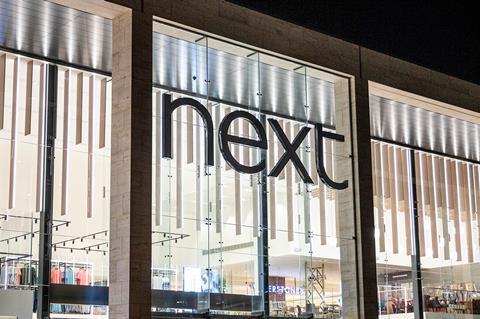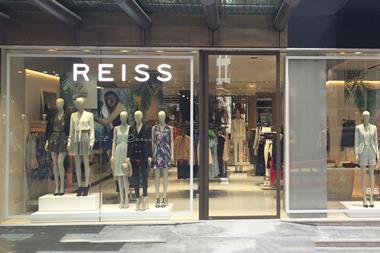Next has posted a surge in profits but downgraded forecasts for its new financial year amid a slowdown in its international business.

The fashion giant delivered a pre-tax profit of £823m in the year ending January 2022, 10% up on pre-pandemic levels and more than double its 2020/21 earnings.
Next’s operating profit of £905.4m marked a 103.7% spike year on year and a 6% uplift on pre-pandemic levels.
The bulk of Next’s profit came from its online division, which posted a 43.4% jump in earnings on a two-year basis to £588.5m. Profits from its stores were £107m, less than half of pre-pandemic levels.
Total sales hit £4.86bn during the period, a jump of 34.1% year on year and 11.5% on a two-year basis.
Almost two-thirds of that revenue, £3.1bn, was spent through Next’s online business – a 44.6% jump compared with pre-pandemic ecommerce sales.
By contrast, revenues raked in through its stores dropped 22.7% on a two-year basis to £1.4bn.
Full-price sales, one of Next’s key performance indicators, grew 32.4% compared to last year and 12.8% on pre-pandemic levels.
Despite hailing a year that “exceeded all our expectations”, Next downgraded its profit forecasts for 2022/23 as a result of the “unusually high level of geopolitical and economic uncertainty”.
The retailer has lowered total sales guidance by £85m and profit guidance by £10m – a 1.2% contraction in previous expectations – following the closure of its websites in Ukraine and Russia, and “moderating growth expectations” in other overseas markets.
Next insisted, however, that the “improved outlook for UK retail sales” would partially offset the loss of overseas revenues and the associated costs of increased markdowns.
It expects full-price sales across the group to increase 5% in the year to January 2023, while pre-tax profit is forecast to grow 3.3% to £850m.
Next boss Lord Wolfson said: “Last year exceeded all our expectations. In the first quarter, during lockdown, we made up for much of the lost retail sales through online sales, particularly homeware and children’s clothing.
“In the second half, despite stock shortages, we were able to scale up online operations to meet pent-up demand for adult clothing. We believe that the second-half performance was, in large part, fuelled by the release of consumer savings accumulated during lockdown.”
On the coming year, Wolfson added: “The buoyancy of our sales last year, along with the benign economic environment that accompanied it, make comparatives in the year ahead challenging.
“Last year’s strength contrasts with this year’s unusually high level of geopolitical and economic uncertainty. The combination of these factors make accurate guidance particularly difficult.”
- Get the latest fashion news and analysis straight to your inbox – sign up for our weekly newsletter
























No comments yet